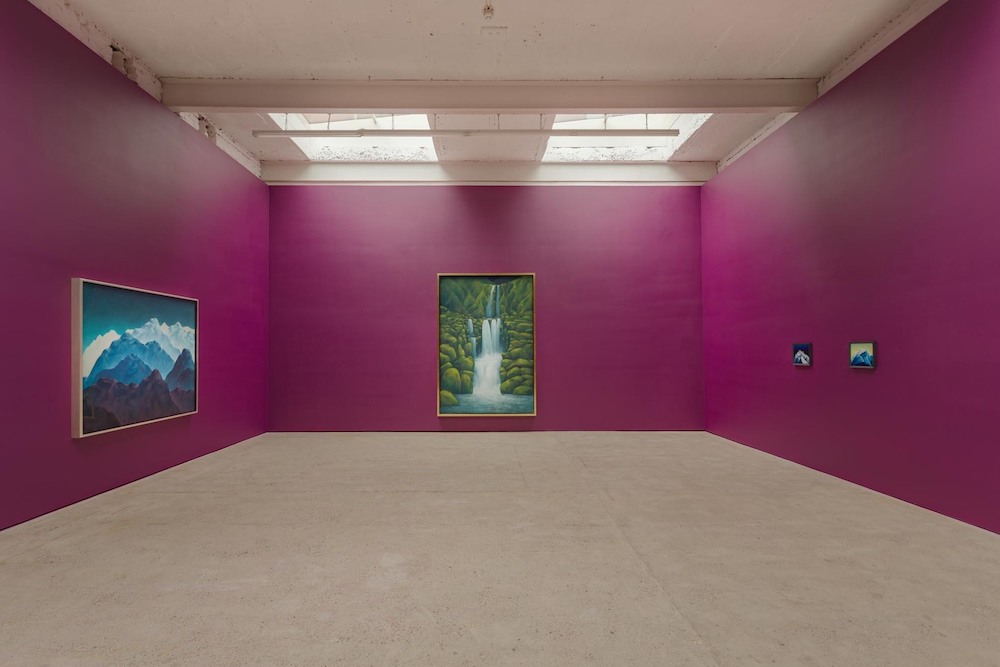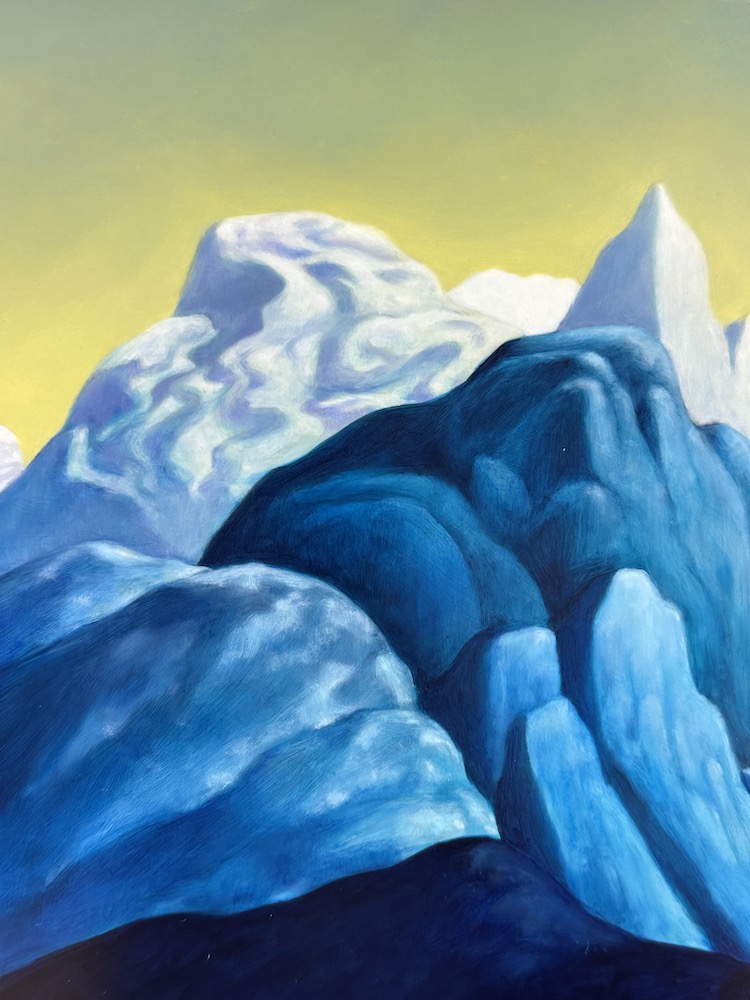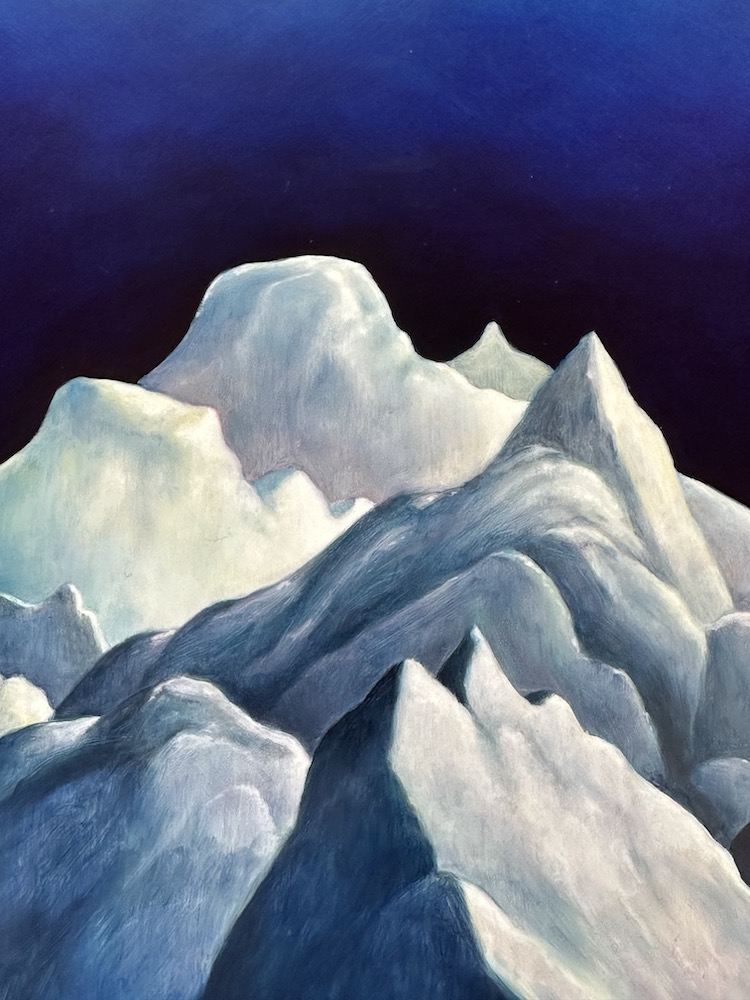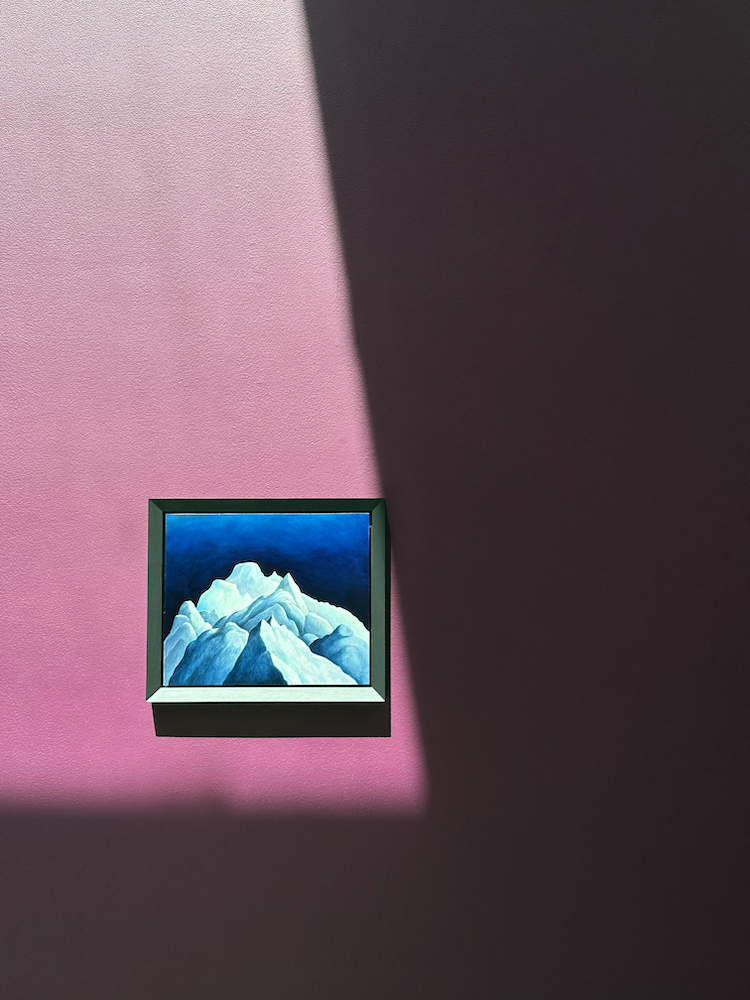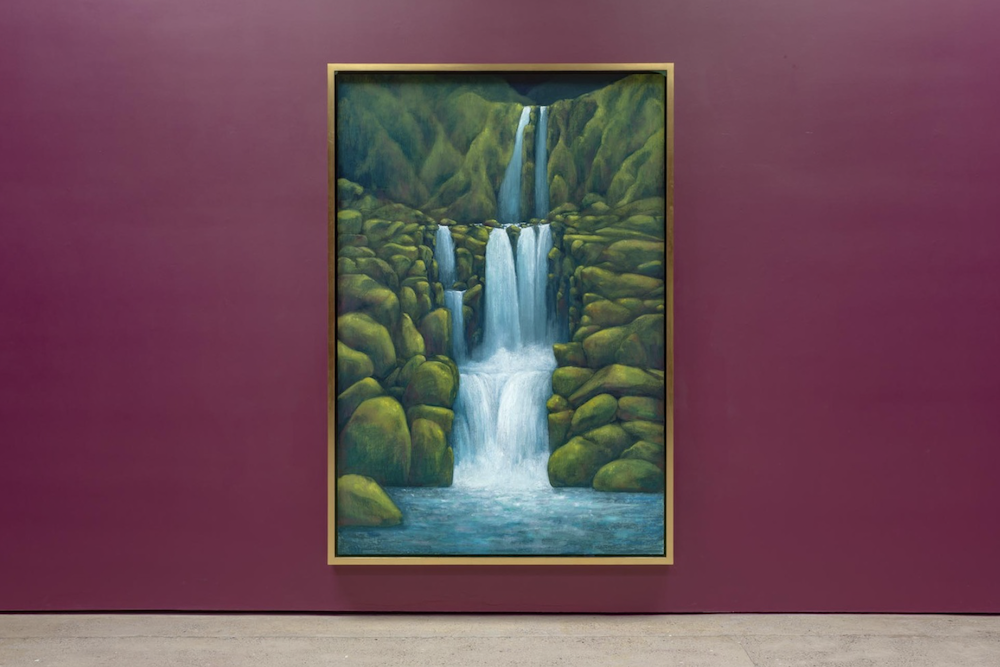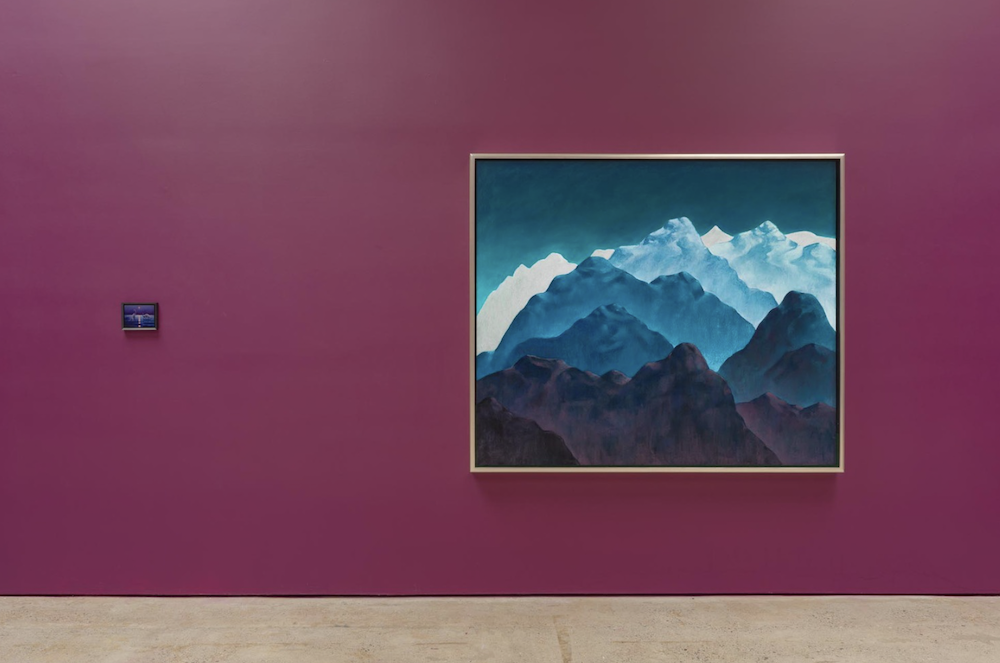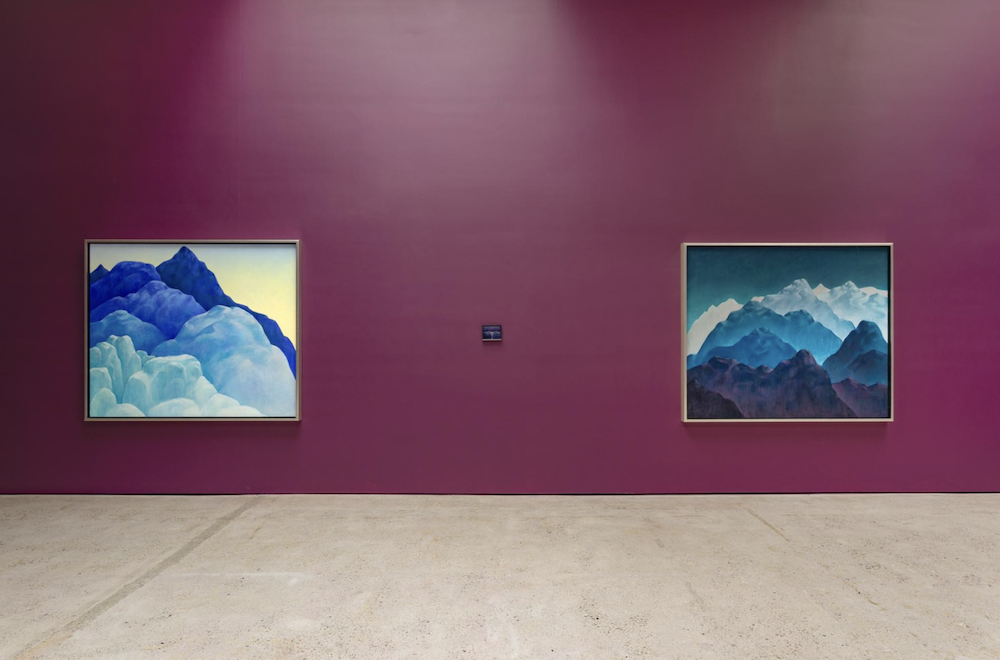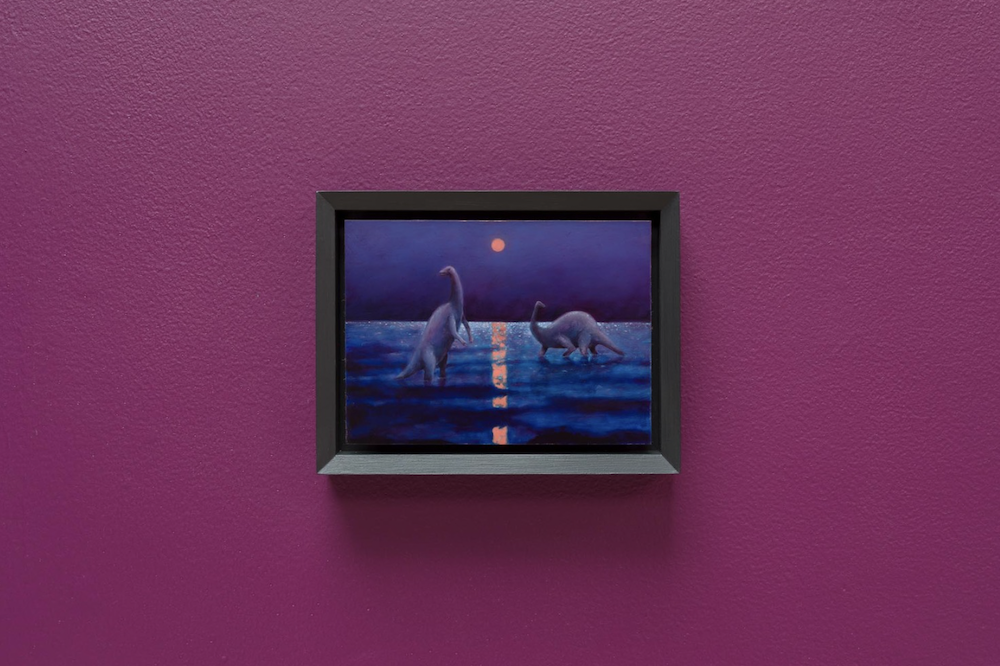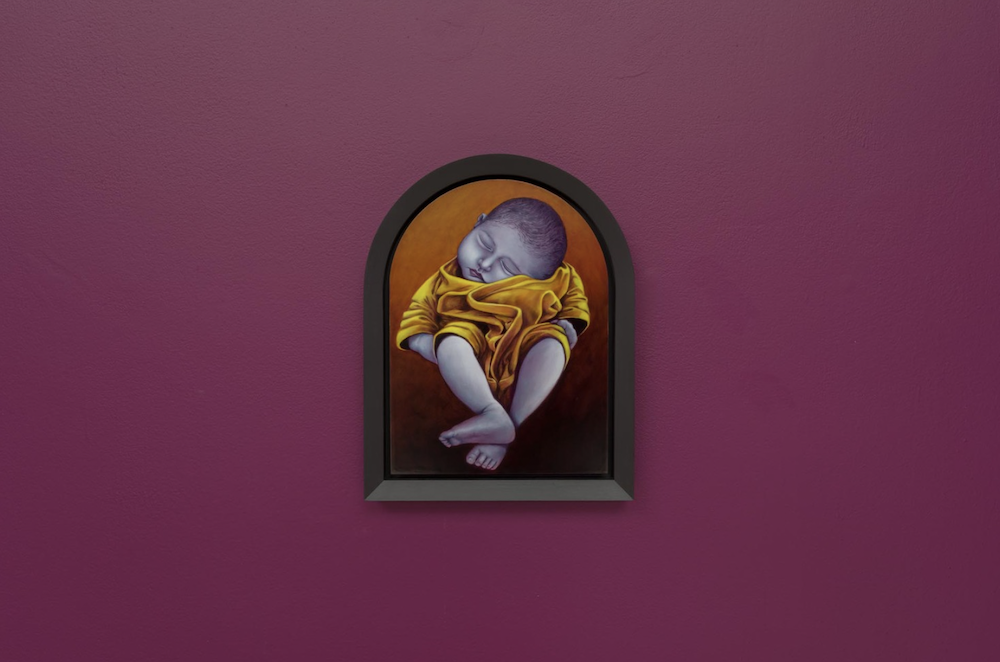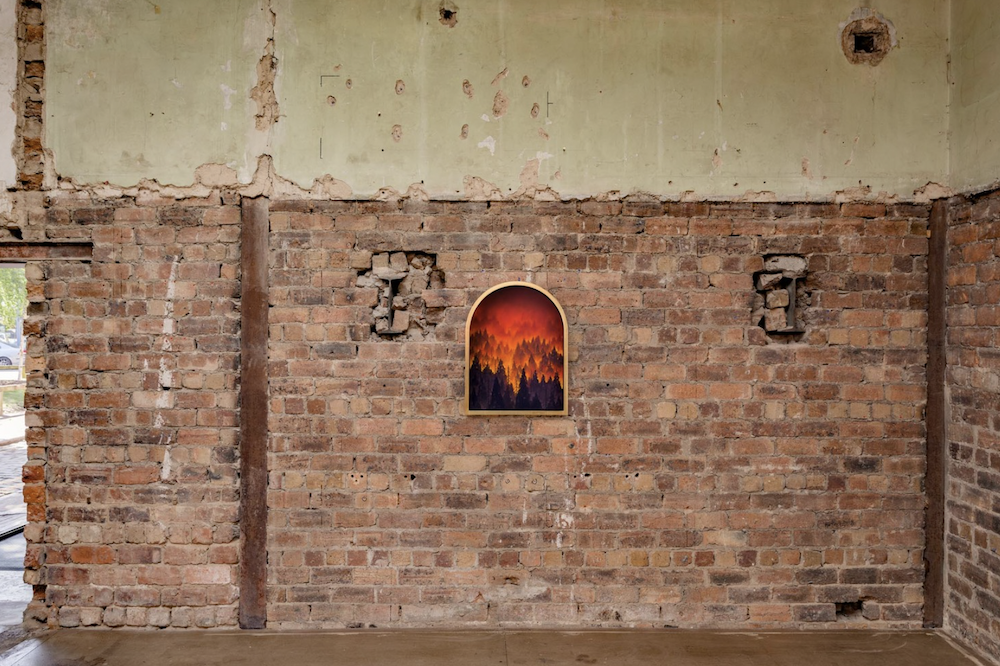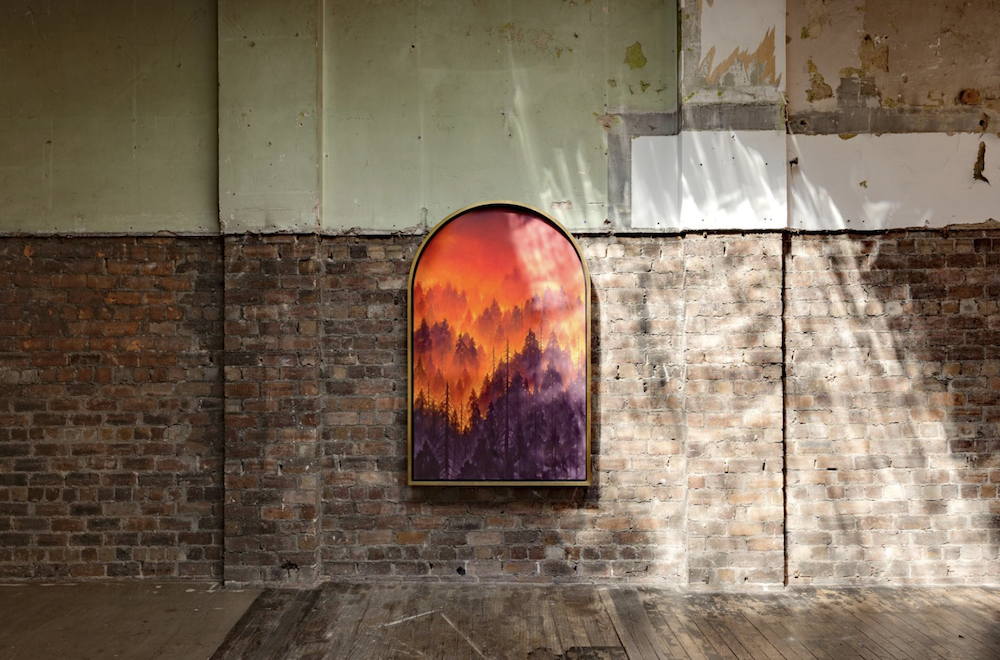For Cretaceous, Nicolas Party’s sixth solo exhibition at The Modern Institute, the artist produced an exhibition occupying Aird’s Lane and the Bricks Space comprised of large pastels and intimately scaled oil-on-copper paintings displayed on freshly painted walls. Collectively, the pieces highlight changes in scale and focus, from sublime mountains and waterfalls to an intimate painting of a small baby. While they contain a variety of subject matters, Party imbues each work with a compelling timeless quality, speaking to the artist’s abiding concern with classical symbols and iconography.
The exhibition’s title takes its name from the geological period which ended in a mass extinction event 66 million years ago. In this sense, Party’s title can be understood as both a response to the apocalyptic moment humans find themselves in, where many of the earth’s species are being made extinct due to climate change, and a more general meditation on the creative and destructive qualities of natural forces. Throughout the exhibition, Party also utilizes his expansive knowledge of art history to work consciously within the established genres of Western art. This enables him to reduce a style to its essence, engage with its metaphorical potential and question the categorisations inherent to each format.
In his pastels, Party presents the viewer with various imagined subjects. The landscapes all depict singular, archetypal vistas that engage with the Romantic notion of the sublime – the internal and emotional mixes with the external forms of nature. The mountain and waterfall pieces, void of humans and animals, have a particular mystical, immutable quality and, as such, remain open and poetic statements to which the viewer can respond. The waterfalls utilise close tones of blue and green, their compositions a nod to Gustave Courbet’s celebrated waterfall canvases from the 1870s. Party’s calm mountain silhouettes are less graphic than many of his previous works and embrace more abstract and atmospheric elements, recalling Georgia O’Keeffe’s expansive paintings of clouds and sky from the mid-1960s.
Party’s waterfalls and mountains stand as a balancing force to the fiery ‘Red Forest’ pieces. The singular motif, forest fires, is the closest to an image of climate disaster in the exhibition. The metaphorical images of destruction, speak to a perennial human anxiety about the end of the world. Recently, Party has been considering the precedents for this kind of imagery throughout art history, particularly paintings of the destruction of Sodom and Gomorrah. Art history remains a key area of research and inspiration for the artist. In the ‘Red Forest’ landscapes, it allows the artist to place apocalyptic thinking within a tradition, trace human’s relationship to the environment across time and consider the precedents of figuration in painting.
The absence of humans or animals in his landscapes is conspicuous in contrast to Party’s paintings of dinosaurs and of a baby. The gravity of the landscape tableaux sits alongside these hopeful and playful inclusions. Like the landscapes, both focus on enduring subjects which to some extent exist outside of time. The painting of the baby chimes with European paintings of the Christ child. The dinosaur works are the result of Party’s study of the history of dinosaur illustration and, in particular, how it changed over time as scientific understanding evolved. While steeped in art historical consideration and research, Party’s paintings remain stylistically cohesive, graceful and idiosyncratic. He is fascinated by the shifting meaning of these motifs and symbols across cultures. In tandem with the various elemental landscape scenes, these works construct an elegant, humorous and wide-ranging consideration of the passage of time – of transience and flux.



